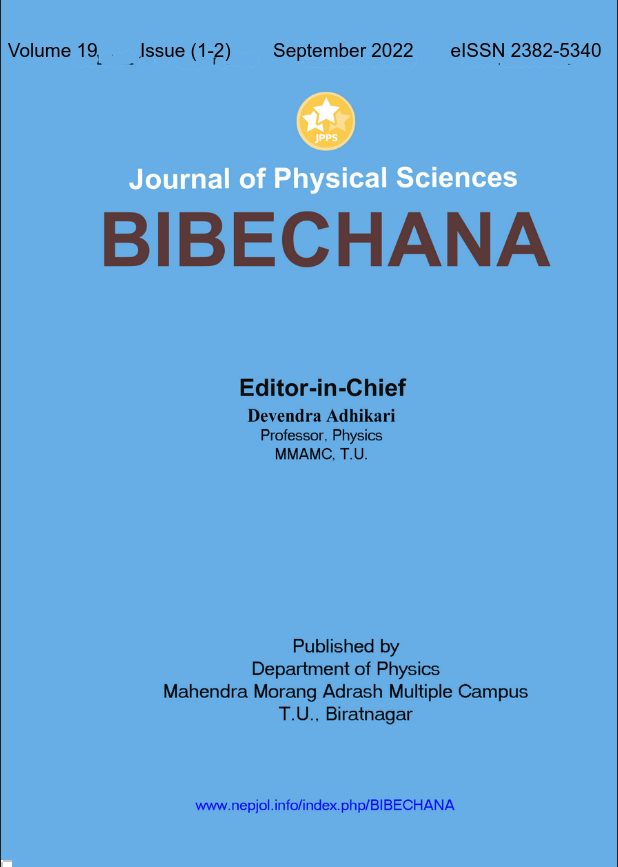Analysis of SARSCOV-2 Cases in Nepal using Different Models
DOI:
https://doi.org/10.3126/bibechana.v19i1-2.46400Keywords:
Epidemic, Exponential Model, Logistic Model, SIR and SIRD ModelAbstract
The world has faced many epidemics during its evolution of human civilization from the influenza epidemic in 1200 BC, to severe acute respiratory syndrome SARSCOV-2 in 2019, each epidemic has become fatal and people have died from thousands to millions. The epidemic pattern of COVID-19 in Nepal is analyzed and predicted using the Exponential, Logistic, SIR (Susceptible Infectious Recovered), and SIRD (Susceptible Infectious Recovered Deceased) models. The cumulative instances of an outbreak rise exponentially at first, described by the exponential model but there is a point of inflection after some time where the curve nearly turns linear which is predicted by the logistic model. The SIR and SIRD models are used to anticipate the number of cumulative cases of COVID-19 for the 400 days based on information supplied by the Ministry of Health and Population. Based on real-time data and data from our simulation, we can conclude that by strengthening the efficiency of social isolation and lockdown, we could significantly reduce the spread of COVID-19 in our country.
BIBECHANA 19 (2022) 102-110
Downloads
Downloads
Published
How to Cite
Issue
Section
License
Copyright (c) 2022 Oat Bahadur Dhakal, Roshan Chalise, Raju Khanal

This work is licensed under a Creative Commons Attribution-NonCommercial 4.0 International License.
This license enables reusers to distribute, remix, adapt, and build upon the material in any medium or format for noncommercial purposes only, and only so long as attribution is given to the creator.




